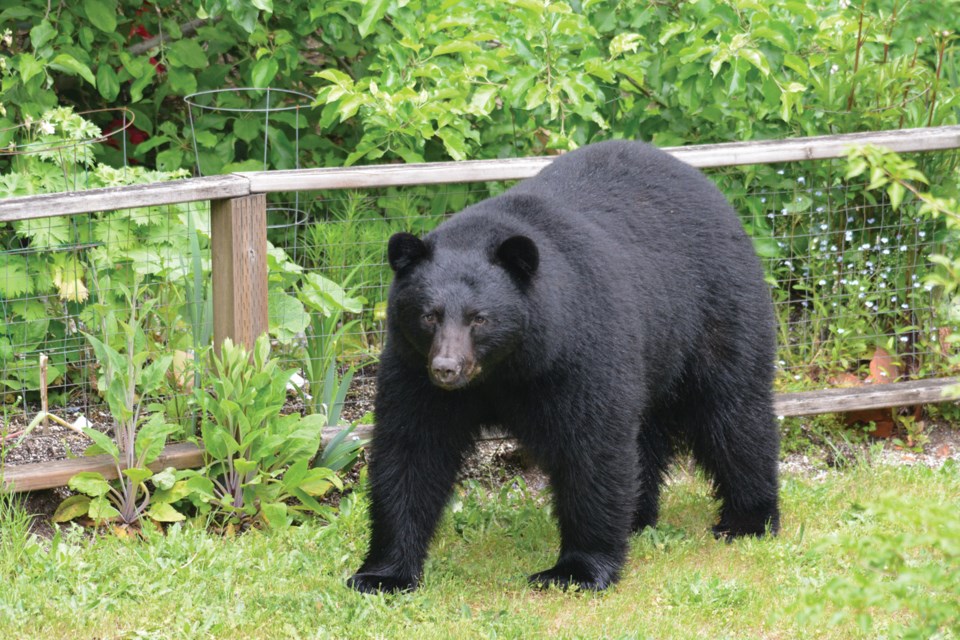Human-bear conflicts have been more numerous on the Sunshine Coast in April and May than in previous years, with warmer temperatures and limited food supply the likely culprits.
“Over the past month there’s definitely been an uptick in conflicts on the Coast,” said Sechelt-based Sgt. Dean Miller of the Conservation Officer Service (COS). By June last year, there were 94 bear complaints made to the COS on the Lower Sunshine Coast. This year, complaints have increased to 152.
Bear activity has been reported across the Sunshine Coast, particularly in the Gibsons area, Sechelt and Halfmoon Bay. A bear has been sighted on Keats Island, too, which would have meant the bear swam to the island – a rare occurrence.
This spring has been unusually warm and dry, which may be a contributing factor to the increase. “It could also mean a crash in food supply, which could be related to the dry, hot weather,” said Miller.
Incidents involving bears this spring include vehicle break-ins and bears pushing on the windows and doors of houses. Two bears were destroyed after break and enters into homes and vehicles and one was destroyed for humane reasons due to injuries by a vehicle.
The Sunshine Coast is not the only region with an uptick. The most recent province-wide statistics put the number of calls about black bears at 732 in April, the highest number since 2011. Grizzly bear sightings are also up across the province. In April, 20 black bears were destroyed in B.C. and four cubs were sent to rehab. No grizzlies were destroyed in April.
Miller also emphasized that seeing bears in close proximity to houses and urban areas is more common in regions where human populations edge contiguous forest, such as on the Sunshine Coast. “Cohabitation is an important concept for people to grasp,” he said.
Common conflicts occur with young bears recently on their own and with family groups, typically a sow and her cubs.
It also requires more prevention efforts, such as ensuring food waste and other attractants are kept out of backyards. According to WildSafe BC, garbage accounted for 60 per cent of calls to the COS between 2014 and 2017. Birdfeeders, pet food, barbecues and compost containing fish, meat, fat, oils and unrinsed eggshells or cooked food can also attract bears, as do fruit trees and berry bushes.
It is a violation in B.C. to intentionally provide, leave or place an attractant to entice dangerous wildlife.
Bears should be reported to the COS if they display aggressive behaviour or if they have become habituated to a food source. “If you’re bear aware, but your neighbour isn’t, that’s a good time to call, too,” Miller said.
The COS hotline is available 24 hours a day, seven days a week: 1-877-952-7277.



